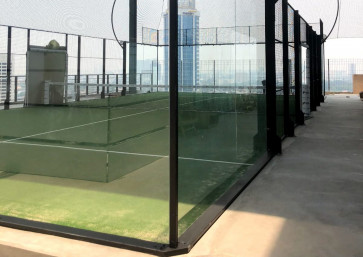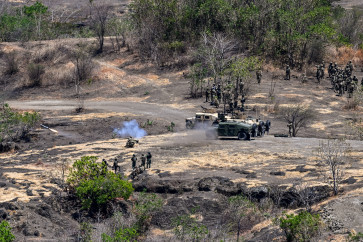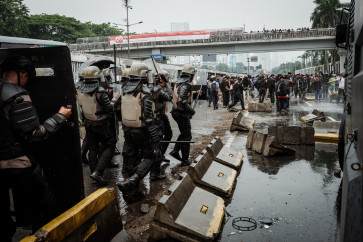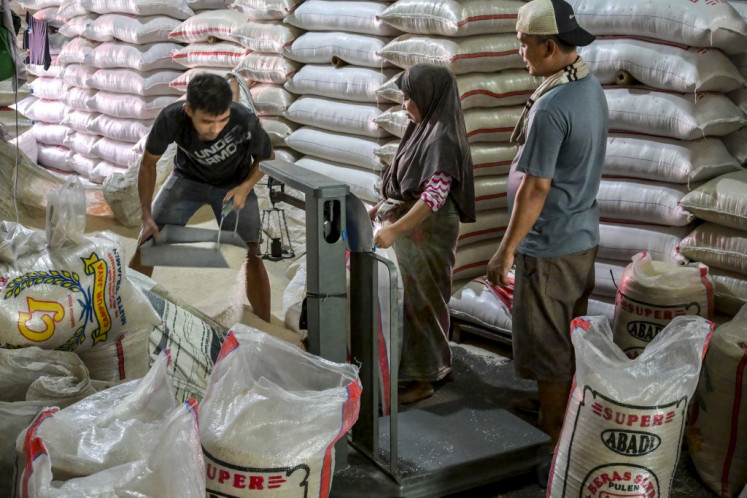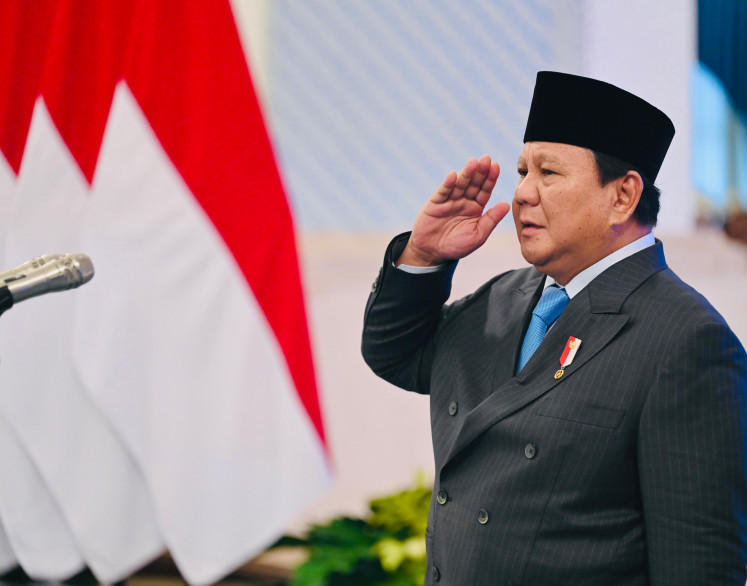Popular Reads
Top Results
Can't find what you're looking for?
View all search resultsPopular Reads
Top Results
Can't find what you're looking for?
View all search resultsSiyu Taksu a continuum of beauty
Simulasi Pemadaman Kebakaran (Fire drill) by Wayan DianaAn ongoing major exhibition has provided powerful evidence that despite the growing popularity and domination of contemporary paintings, traditional Balinese paintings still lead a vibrant, productive and inspiring life
Change text size
Gift Premium Articles
to Anyone
Simulasi Pemadaman Kebakaran (Fire drill) by Wayan Diana
An ongoing major exhibition has provided powerful evidence that despite the growing popularity and domination of contemporary paintings, traditional Balinese paintings still lead a vibrant, productive and inspiring life.
Titled “Siyu Taksu (A Thousand Spirits): Post-Bonnet Ubud and Batuan Traditional Paintings”, the exhibition was opened Tuesday evening by Jakarta Governor Fauzi Bowo in a modest ceremony at Plaza Indonesia, Central Jakarta.
The opening ceremony was also attended by Agung Rai and Sutedja Neka, two important figures in the Balinese fine-arts realm. Agung Rai is the founder of the majestic Agung Rai Museum of Arts (ARMA), while Neka is the founder of the historic Museum Neka and co-author of the seminal book The Development of Balinese Paintings.
Both were thrilled by the exhibition, although for different reasons. Agung Rai saw the event as another testament of the special place Bali and the Balinese people have occupied in the hearts of non-Balinese.
“A lot of people here truly care about Bali and our arts,” he said with a wide smile.
Neka, meanwhile, found the exhibition to be an important milestone for traditional Balinese painting.
“It will mark the revival of traditional Balinese painting,” he said.
Reviving traditional Balinese painting was actually the primary reason for the exhibition. Chairman of Bali Bangkit, Jusuf Wanandi, said that for decades traditional Balinese painting had been sidelined by contemporary and modern art.
“Many young Balinese painters have abandoned this traditional style because it is difficult to create, lacks public appreciation and only has a miniscule market,” he said.
Bali Bangkit, an organization of private collectors and concerned individuals, was set up in the aftermath of the 2002 and 2005 terrorist attacks on several tourism establishments in the resort island. The bombings paralyzed Bali’s economic backbone, the tourism industry.
Bali Bangkit is a solidarity movement aimed at assisting the island during the difficult journey toward recovery.
“Most buyers of traditional Balinese paintings are Western tourists,” said exhibition curator Agus Dermawan T.
“Following the bombings, the number of Western tourists declined sharply. Balinese painters faced the grim reality of not being able to sustain their arts. Bali Bangkit organized several events to promote traditional Balinese painting as well as to encourage domestic collectors to purchase these paintings.”
Wanandi said that four years after its inception in 2006, Bali Bangkit had succeeded in assisting the revival of the traditional Balinese painting.
“Now the number of Balinese youths who choose to express their esthetic views through the traditional style is increasing,” he said.
“For instance, in the tiny hamlet of Keliki in Ubud, there are more than 200 painters now. And the quality of their work is superb. It is amazing.”
It took Agus Dermawan seven months to prepare the event. For him, the whole process elevated him to “heaven”.
“It is a process of recreating heaven; what we see now in this exhibit is heaven itself, a collection of beautiful works of art that reflect the Balinese artists’ devotion to beauty as well as commitment to detail,” he said.
Cermin Bumi di Beji (Mirror of Earth on the spring) by Ni Gusti Agung Galuh.
Traditional Balinese painting has always mesmerized him as a unique style that has survived various changes and challenges brought over time, he added.
Historically speaking, he went on, Indonesian fine arts had undergone various struggles and changes, from the debate between the Bandung-based pro-Western artists and the Yogyakarta-based pro-national artists, to the current rise of Chinese-influenced contemporary painting.
“Yet, throughout all those changes, traditional Balinese painting has managed to survive with its own style,” Agus Dermawan said.
The works on display, he said, were the best paintings from the period beginning 1980. This period marked the start of a new creative exploration as Balinese painters freed themselves from the dominant influence of Dutch painter Bonnet (1895-1978), who had arrived in Bali in 1929 and later on co-founded the influential artists’ association Pitamaha with Walter Spies and Ubud prince Cokorda Gde Agung Sukawati.
“After Bonnet’s death, Balinese painters searched for new ‘lamps’ to shine upon their path of exploration,” Agus Dermawan said.
“The search for these ‘lamps’ started in 1980 in Ubud and Batuan.”
Traces of Bonnet’s and Spies’ influences can still be seen in the displayed works. Their legacy of Western techniques to create the illusion of light, shadow and perspective appear here and there.
Yet the works also clearly display the painters’ exploration of new esthetics as well as their faithful loyalty to the traditional characteristics of Balinese painting.
Noted art critic Jean Couteau said there ware three major points that set traditional Balinese painting apart from its modern and contemporary counterparts. The first is related to its fixation with predetermined patterns.
“These set patterns for the eyes, body posture, hairstyles and other elements have always made their presence on the canvas, and the artists repeat similar patterns and sub-patterns over and over again in their works,” he said.
The second is related to its tendency to fill the canvas totally and completely, often without leaving any empty space untouched. A traditional Balinese painting is usually a canvas completely packed with detailed, repeated patterns and sub-patterns.
“Consequently, those who attempt to appreciate traditional Balinese painting would initially see nothing, no element stands out as the esthetic focus of the painting, and all elements seem like they are created by the artist with similar energy and attention,” Couteau said.
The third is related to its transmission. Traditional Balinese painting is the result of a village-based internship educational system. In this system, traditional teachers transmit the norms and values of an agriculture-based communal civilization to their pupils.
“Traditional Balinese painting represents a resistance mounted by a local culture against the global culture,” Couteau added.
The exhibition is not only important from an esthetic point of view but also from a historical perspective. The 80 participating painters hail from three different generations.
To a certain extent, the exhibition represents the ability of traditional Balinese painting to survive the ages, to be a continuum of beauty and creativity.
— Photos by I Wayan Juniartha
Siyu Taksu
Post-Bonnet Ubud and Batuan Traditional Paintings
Oct. 13-25
Multifunction Hall, Plaza Indonesia
Jl. Thamrin, Central Jakarta



